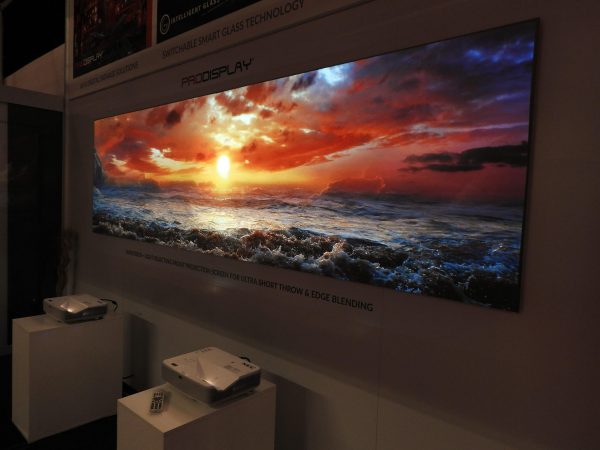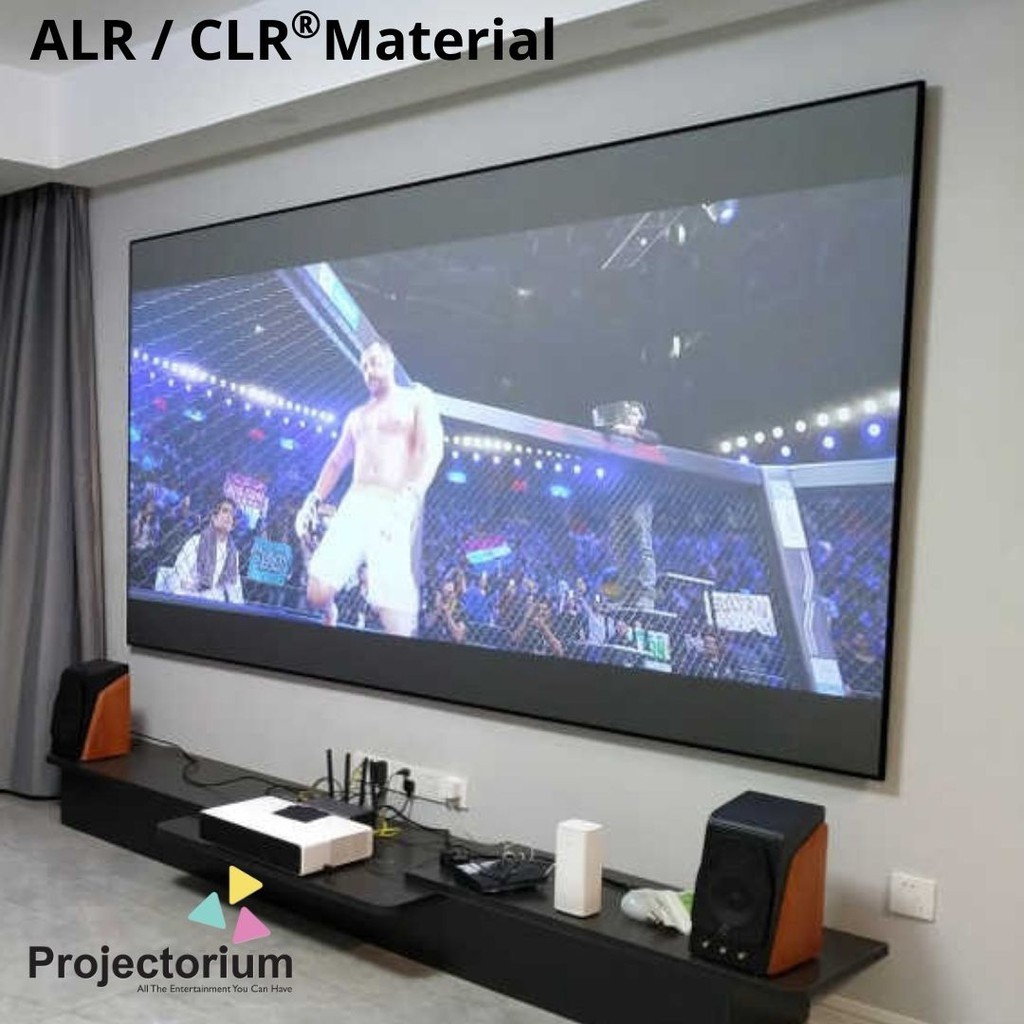

A fixed frame screen hangs on the wall and is a permanent fixture much like a TV screen.
Ambient light rejecting screen install#
Installation type (fixed frame, drop down, floor-rising): Consider how you plan to install your projector screen. For most UST projectors, a lower gain is often better since less ambient light is reflected by the screen.

A higher gain translates to more reflected light, while lower gain means more light that’s absorbed by the screen. The reflectivity of a screen is called gain. Gain: Projector screen reflect light back from the projector towards the audience. Though that doesn’t mean you can’t go larger, it typically means that images beyond the max recommended screen size will be more difficult to focus or not as bright. Usually, UST projectors top out around 150-inches. Often with ultra-short throw projectors, it’s somewhat lower than non-UST projectors. Usually, projectors will have a maximum size. Screen size: Figure out what size screen you want to project on. More specifically, a CLR screen absorbs light from overhead while reflecting the beam of the projector back at the viewer. This results in a brighter picture than a non-ALR screen. This is achieved by utilizing an angular reflective surface that reflects ambient light from higher angles while at the same time reflecting light from the projector. ALR screens block light from sources other than the projector itself. Additionally, because UST projectors throw light up from the bottom of the screen, you’ll need a special type of screen, a ceiling light rejecting (CLR) screen.Ĭeiling Light Rejecting (CLR) screen: A CLR screen is a type of ambient light rejecting (ALR) screen. But because of the close distance from the lens to the screen, any minor imperfections will be amplified because of the optics, so screens that aren’t tensioned won’t work. Technically, any surface including a wall will work for a screeb. What to Look for in a Screen for an Ultra-short Throw Projectorīased on how close to the screen a UST projector sits, you’ll want a specialized screen. Contrastingly, UST projectors sit directly in front of the screen and avoid any tricky cable routing or projector mounting. Accordingly, you’ll need figure out solutions to cable management and projector placement. Long and short-throw projectors still require four to eight or even more feet between the lens and screen. Therefore, UST projectors are often solid TV alternatives that produce bright, vivid images even in situations where there’s a lot of ambient light.įurthermore, you can simply plop an ultra-short throw projector on an entertainment center where you would a TV. As such, the resulting image from an ultra-short throw projector often appears brighter than a long- or even short-throw projector. Because ultra-throw throw projectors require a few inches of space between the unit and the screen to shoot a 100-inch or larger image, UST projectors are great solutions for having a home theatre in a small space.Īdditionally, since the lens is closer to the screen, there’s less light saturation. First, and most obviously, there’s the space-saving factor.

Short-throw projectors, and more specifically UST projectors, yield certain advantages over traditional long throw projectors. Are UST Projectors Better Than Traditional Projectors? And an ultra-short throw projector requires a mere few inches to achieve a 100-inch or larger image. A short-throw projector needs only four or five feet to shoot a 100-inch picture. Traditional projectors, or long throw projectors, require around 8 to 10 feet of distance between the lens and the screen to shoot a 100-inch image. Generally, there are three varieties of projectors when considering throw ratio. So if you want a ten-foot wide image, you’ll need to place your projector 15 feet back from the screen.

The number after the color stands for one foot of screen width. In this case, the first number, 1.5, represents the distance from the projector to the screen in feet. Throw ratio is listed as a number followed by a colon, then another number.įor example, a projector might have a throw ratio of 1.5:1. A projector’s throw ratio calculates how far back a projector needs to sit in order to achieve a certain screen size. The distance from the lens to the screen dictates how large or small the picture is. Unlike televisions which feature a fixed screen size, projectors offer a variable image size. Check out the best ultra-short throw projector screen options on the market! What is an Ultra-short Throw Projector? But if you’re using a UST projector, you’ll want the right screen. More specifically, an ultra-short throw (UST) projector provides a TV-like experience with simple set up. Since many large format TVs are pretty expensive, projectors generally deliver a better price-to-screen size ratio. A projector boasts many benefits over a traditional television set.


 0 kommentar(er)
0 kommentar(er)
